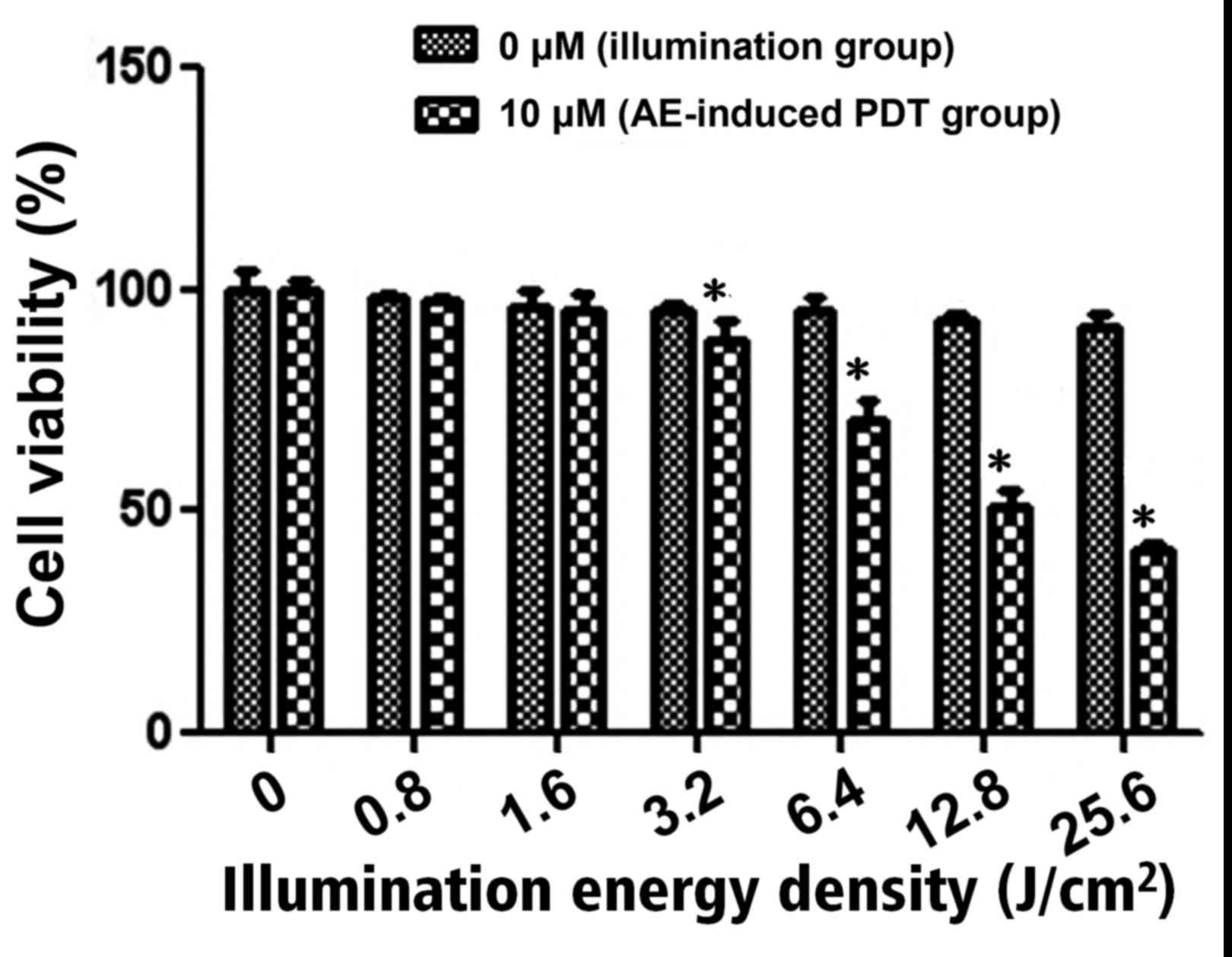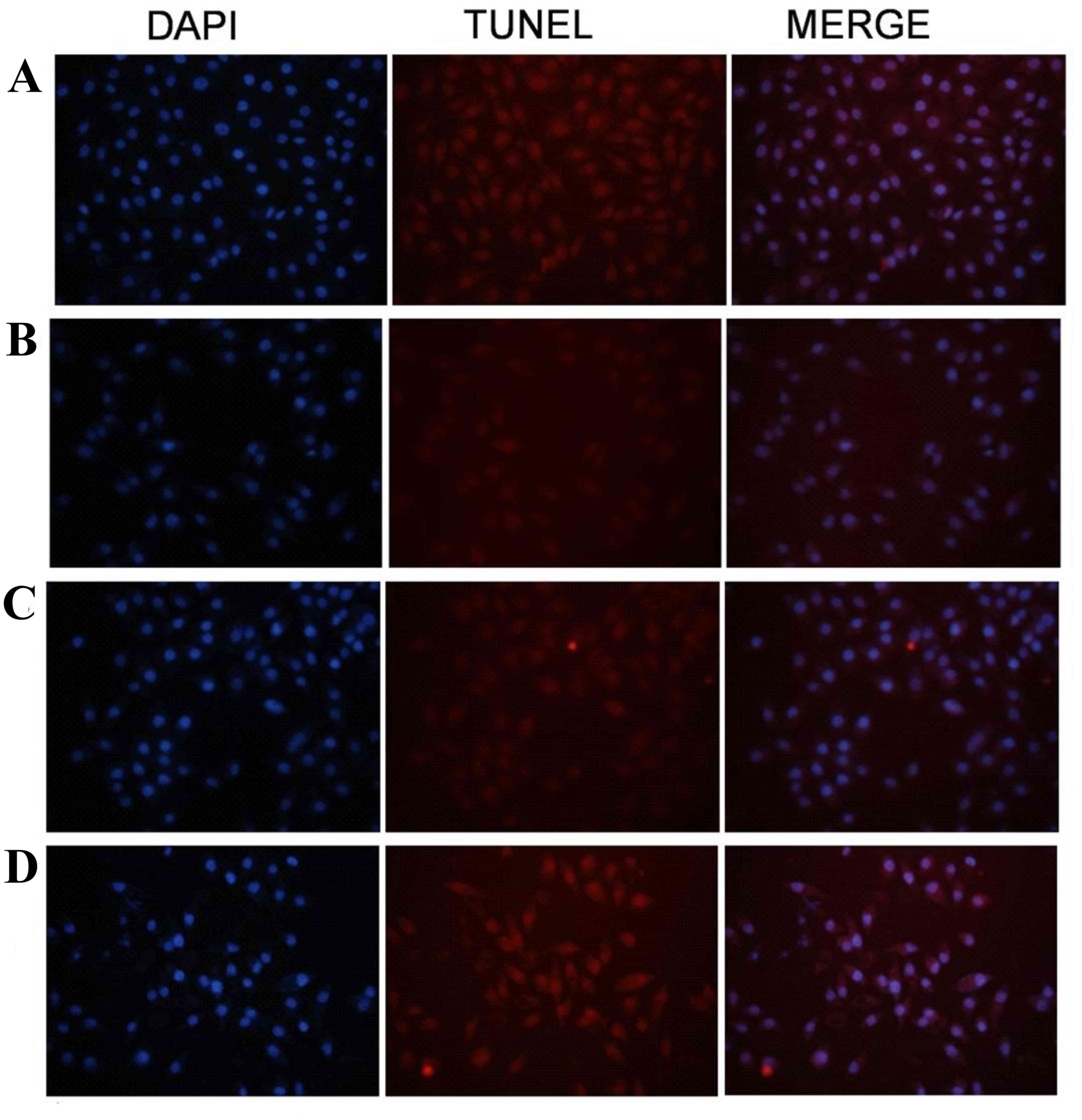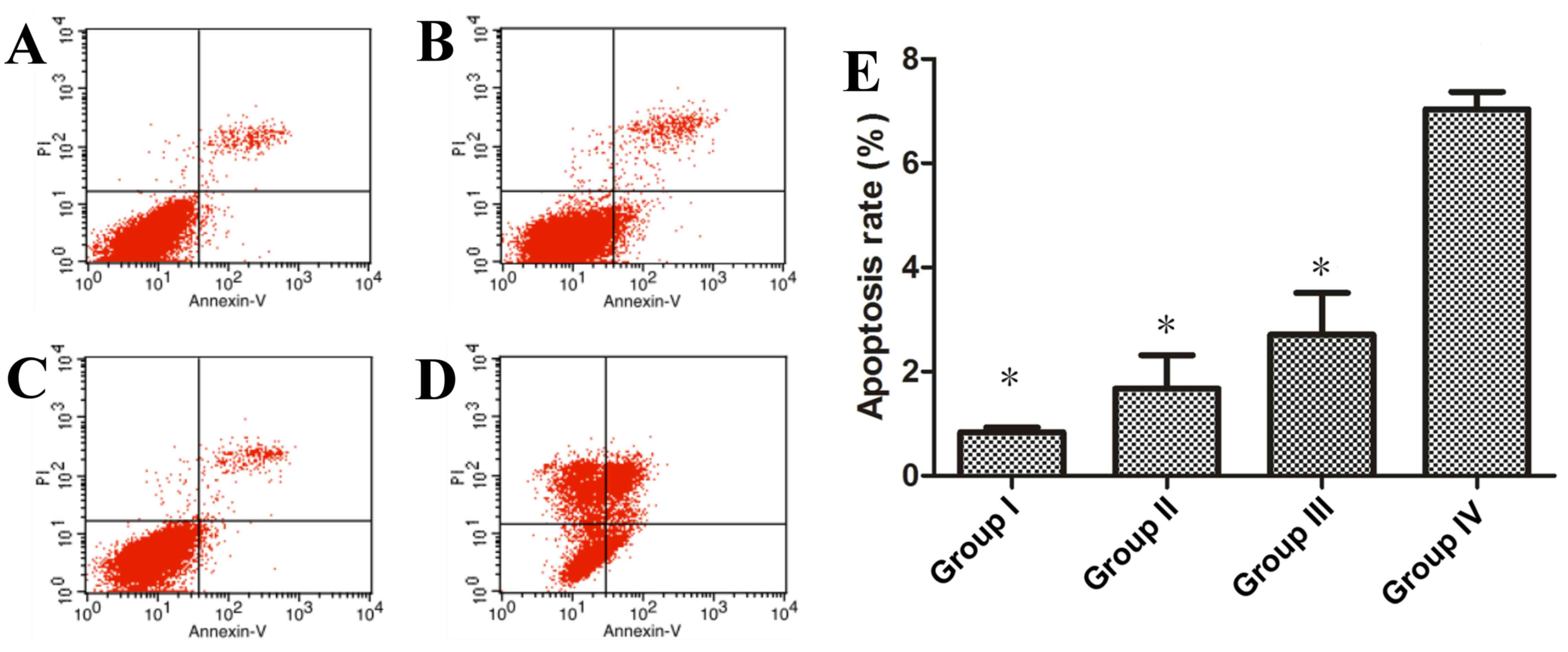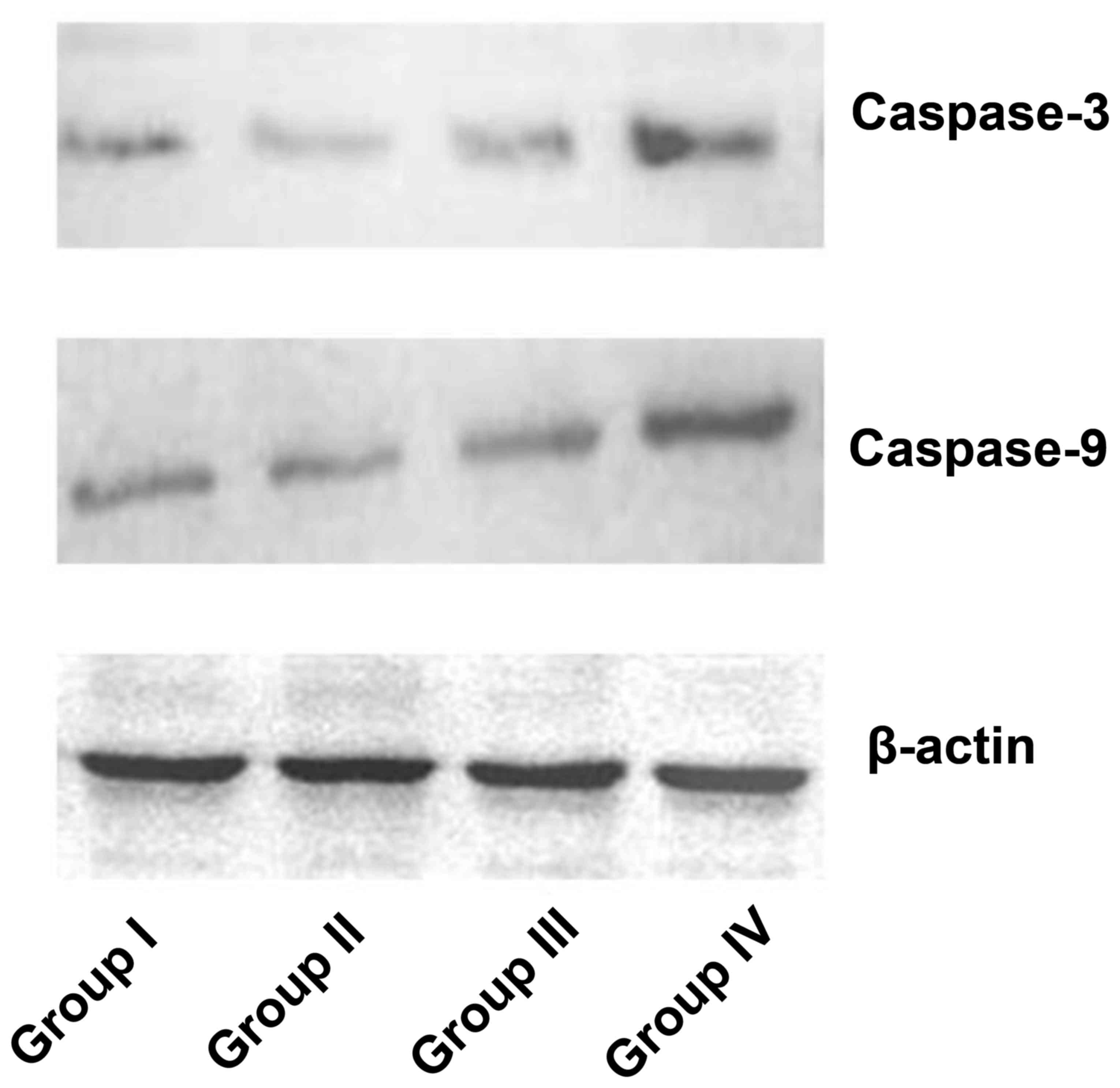The effect of aloe‑emodin‑induced photodynamic activity on the apoptosis of human gastric cancer cells: A pilot study
- Authors:
- Published online on: March 27, 2017 https://doi.org/10.3892/ol.2017.5915
- Pages: 3431-3436
-
Copyright: © Lin et al. This is an open access article distributed under the terms of Creative Commons Attribution License.
Metrics:
Total
Views: 0 (Spandidos Publications: | PMC Statistics:
)
Total PDF Downloads: 0 (Spandidos Publications: | PMC Statistics:
)
Abstract
The aim of the present study was to explore the effect of aloe-emodin (AE)-induced photodynamic activity in human gastric cancer cells. AE was used as a photosensitizer to explore the effect of photodynamic therapy (PDT) in human gastric cancer cells (SGC‑7901). An MTT assay was used to detect the effect of AE‑induced PDT in optimal concentrations and illumination energy densities in human gastric cancer cells. Following AE‑induced PDT, morphological changes of the cells and the rate of cell death were evaluated by TUNEL assay and flow cytometry, respectively. The expression levels of caspase‑9 and caspase‑3 were determined by western blot analysis. The AE and AE‑induced PDT demonstrated a significant inhibitive effect on the proliferation of human gastric cancer cells in dose‑dependent and energy‑dependent manners. For subsequent experiments, 10 µM AE and 12.8 J/cm2 illumination energy density were used. Typical morphological changes of apoptosis were observed in the cells using a TUNEL assay 12 h subsequent to AE‑induced PDT. The percentage of apoptotic cells treated with AE‑induced PDT significantly increased when compared with the control group, the 10 µM AE group and the illumination group (P<0.05). Upregulation of caspase‑9 and caspase‑3 protein levels was also observed following AE‑induced PDT. The present study revealed that 10 µM AE‑induced PDT had an inhibitory effect on human gastric cancer cells, and it may induce cell apoptosis by upregulating caspase‑9 and caspase‑3, which indicated that the mitochondrial pathway may be involved. AE‑induced PDT has the potential to be a novel therapy for the treatment of human gastric cancer. However, further investigations are required.















